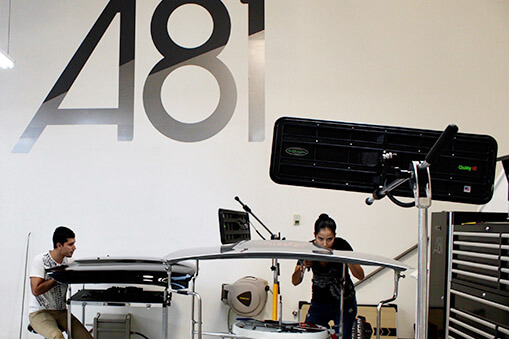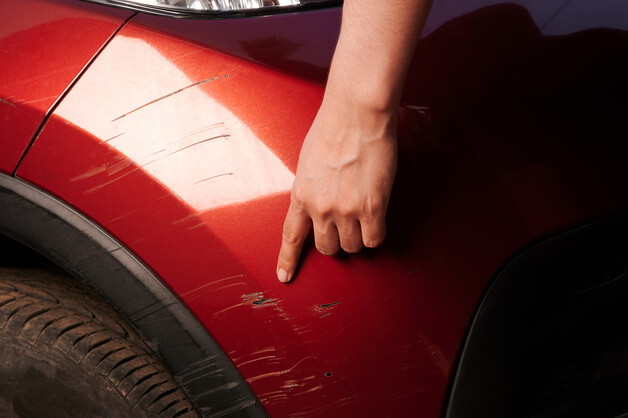Hail Damage Repair
Complete Guide to Costs & Solutions
Hail damage can be both visually unappealing and structurally detrimental to vehicles. The sudden nature of hailstorms leaves little time for preventative measures, making the subsequent repairs crucial for vehicle maintenance and value retention. This guide provides an in-depth look at hail damage repair, outlining what it entails, how costs are determined, and steps you should take immediately following a hail event.
What is Hail Damage Repair?
Hail damage repair involves several techniques used to restore the bodywork of a vehicle after it has been damaged by hailstones. This damage typically appears as dents on the roof, hood, and trunk, and in severe cases, can include cracked or shattered glass and damaged mirrors. The goal of repair is to return the vehicle to its original state, preserving both appearance and structural integrity.
- Light Damage: Minor dents that are more cosmetic and often do not require paint work.
- Moderate Damage: Larger dents that may affect the vehicle’s paint and could have more significant structural implications.
- Severe Damage: Extensive dents with potential paint and glass damage, possibly affecting the vehicle’s functionality and safety.

Assessing the Damage

Initial Assessment Steps
- Safety First: Ensure it’s safe to assess the damage, avoiding any potential hazards like broken glass.
- Visual Inspection: Conduct a thorough visual inspection to identify all areas impacted by hail. Use a soft lighting source to highlight the dents and scratches more effectively.
- Document the Damage: Take clear photos from multiple angles. These photos will be crucial for insurance claims and repair evaluations.
DIY vs. Professional Assessment
- DIY Assessment: Allows you to quickly gauge the extent of visible damage at no cost. This is practical for light damage where insurance claims may not be necessary.
- Professional Assessment: Necessary for moderate to severe damage. Professionals use specialized tools and techniques to assess and repair, ensuring that all damage, even that not visible to the untrained eye, is properly addressed.
Deciding between DIY and professional assessment depends on the severity of the hail damage and the individual’s comfort with their ability to accurately judge the damage. In many cases, a professional assessment will provide the most thorough evaluation, ensuring that all damage is identified and appropriately managed.

NEW PROMOTION
Caught in the recent hailstorm?
Receive a complimentary basic car detail and get money back on your deductible when you choose us for hail damage repairs!
Get a Free Estimate
Repair Processes Explained
Traditional Repair Methods
Traditional hail damage repair often involves body filling and repainting. Here’s how it typically works:
- Body Filling: Technicians use a body filler to fill in the dents, which is then sanded down to create a smooth surface that matches the original body contour.
- Repainting: After sanding, the affected areas are primed and repainted to match the original color and finish of the vehicle.
This method is most suitable for severe hail damage where the paint has been cracked or chipped, and the dents are too large or deep for paintless dent repair (PDR).


Paintless Dent Repair (PDR)
Paintless Dent Repair (PDR) is a popular and less invasive repair method for hail damage. It involves:
- Accessing the Dent: Technicians gain access to the backside of the dent.
- Special Tools: Using specialized tools, they gently push the dented metal back into its original shape without damaging the existing paint.
- Efficiency and Cost-effectiveness: PDR maintains the original paint and is typically quicker and less expensive than traditional repairs.
PDR is ideal for lighter and moderate hail damage where the paint surface is still intact. It’s widely preferred due to its ability to preserve the original paint and offer a more cost-effective solution compared to traditional methods.
Cost of Hail Damage Repair
Factors Influencing Cost
The cost of repairing hail damage can vary significantly based on several factors:
- Severity of Damage: More extensive damage requires more time and resources to repair, increasing the cost.
- Repair Method Chosen: Traditional repairs generally cost more than PDR due to the need for repainting and materials.
- Location: Labor costs can vary by region, affecting the overall cost of repairs.


Insurance and Hail Damage
Dealing with insurance can significantly mitigate the cost of repairs:
- Coverage Details: Ensure your insurance policy covers hail damage under comprehensive coverage.
- Claim Process: File a claim promptly. Provide detailed documentation of the damage, using the photos taken during the initial assessment.
- Deductibles and Premiums: Be aware of your deductible amount and any potential impacts on your premiums after a claim.
Understanding these cost factors and navigating insurance claims can help manage the financial burden of hail damage repairs effectively.
What to Do After Hail Damage
Immediate Steps to Take
Immediately after experiencing hail damage, take the following steps to minimize further damage and prepare for repair:
- Cover the Vehicle: If more storms are expected, cover your vehicle with a car cover or blankets to protect it from further damage.
- Avoid Driving: If the windows are damaged, avoid driving the vehicle to prevent structural weakening and potential injury from broken glass.


Choosing a Repair Service
Selecting the right repair service is critical for effective hail damage repair:
- Check Reviews: Look for service providers with positive reviews and testimonials from previous customers.
- Certifications: Choose a shop that employs certified technicians and has credentials from reputable industry organizations.
- Warranty: Ensure the repair service offers a warranty on their work to guarantee the quality and durability of the repairs.
In Summary
Understanding hail damage repair is essential for any vehicle owner living in areas prone to severe weather. By following the outlined steps and choosing the right repair methods and services, you can effectively manage and repair hail damage, ensuring your vehicle remains in good condition and retains its value.
Colorado’s Most Trusted Auto Hail Repair Shop
Our dedication to providing the best auto hail repair services in the Denver Area, has earned us a reputation for excellence. When you choose A81 Dent Repair, you’re choosing:
- Quality: Our skilled technicians have 20+ years of experience and use the latest technology to ensure flawless repairs.
- Convenience: We offer a hassle-free experience, handling everything from insurance claims to deductible coverage.
- Local Expertise: As your local Colorado auto hail repair specialists, we understand the unique challenges posed by Colorado’s weather.
- Preservation of Value: With our PDR technique, we preserve your vehicle’s value by maintaining the original factory paint and appearance.
- Customer Satisfaction: Our commitment to your satisfaction is unwavering. We take pride in exceeding your expectations.
Contact Us Today
When hail damage strikes, turn to A81 Dent Repair for hail damage repair, paintless dent repair, and more. Whether you have minor hail dents or more extensive damage, we’ve got you covered.
Get your vehicle back in pristine condition. Call us at 303-956-5844 or visit our auto body shop for a free estimate. Trust A81 Dent Repair for all your automotive hail damage repair needs!
Get a Free Estimate
Testimonials from Satisfied Customers
We understand that choosing a dent repair provider is a big decision, and you want to be sure you’re making the right choice. That’s why we invite you to read real-life success stories from our satisfied customers. Their feedback speaks volumes about the amazing job we do and the level of service we provide.
Our customers have experienced firsthand the quality of our repairs and the dedication of our team. Their testimonials not only showcase our technical expertise but also highlight our commitment to customer satisfaction. We take great pride in these success stories, and we look forward to adding yours to the list.
